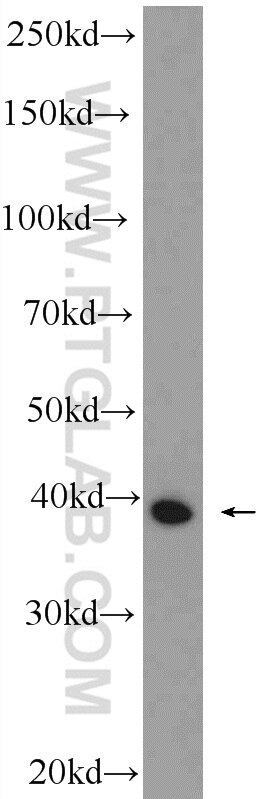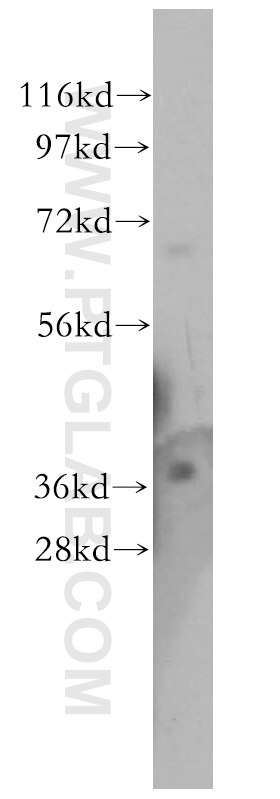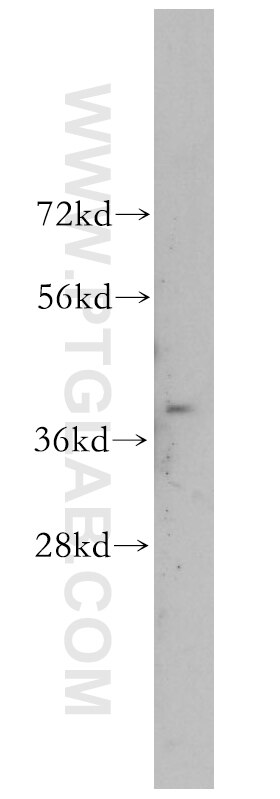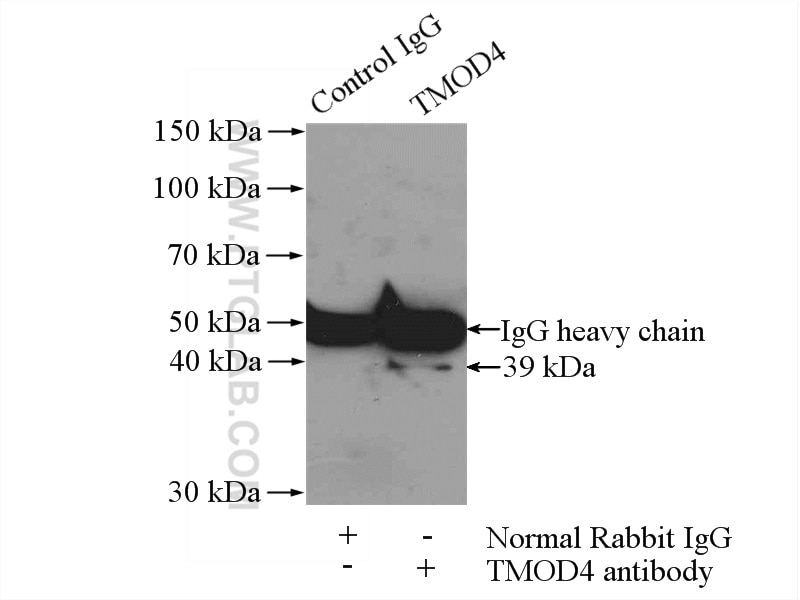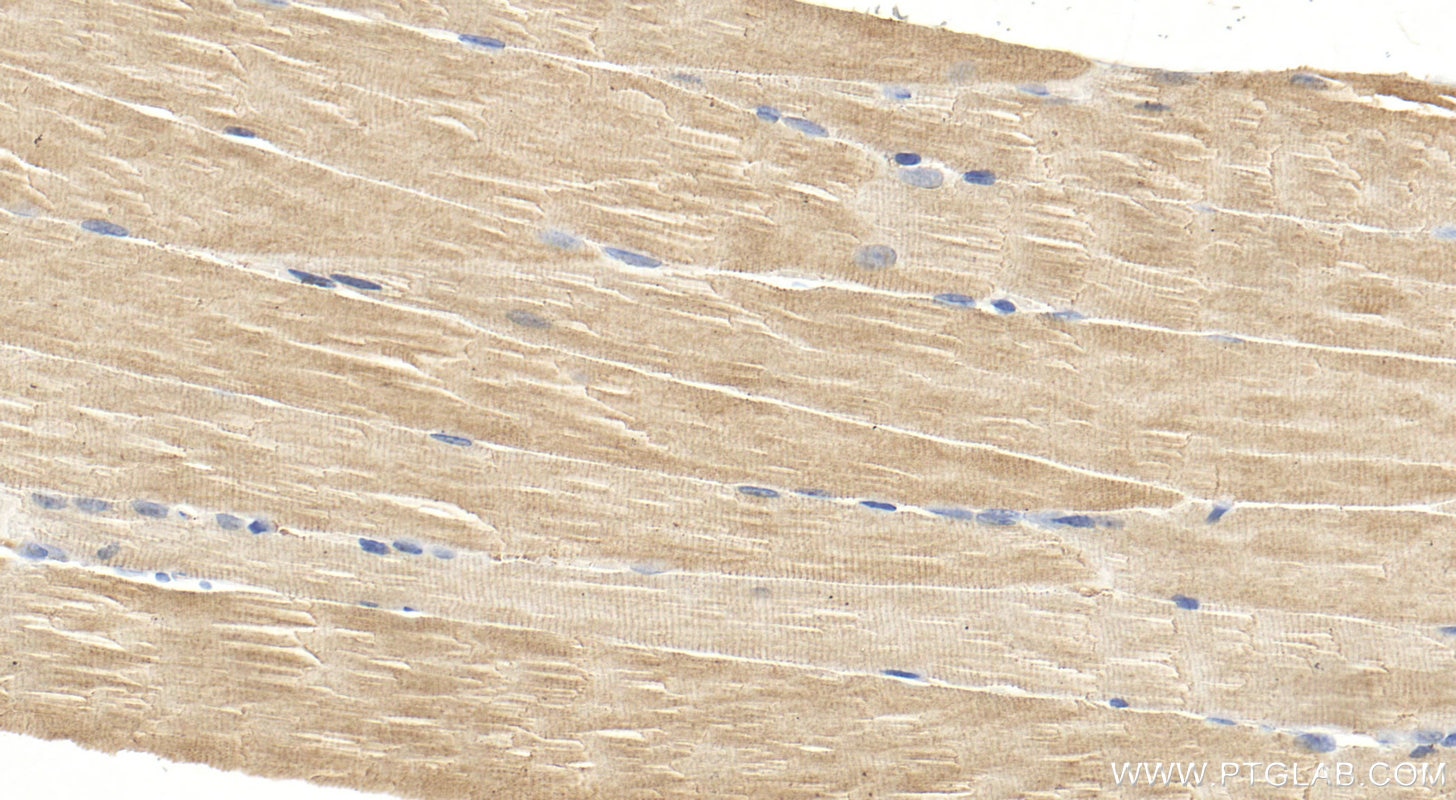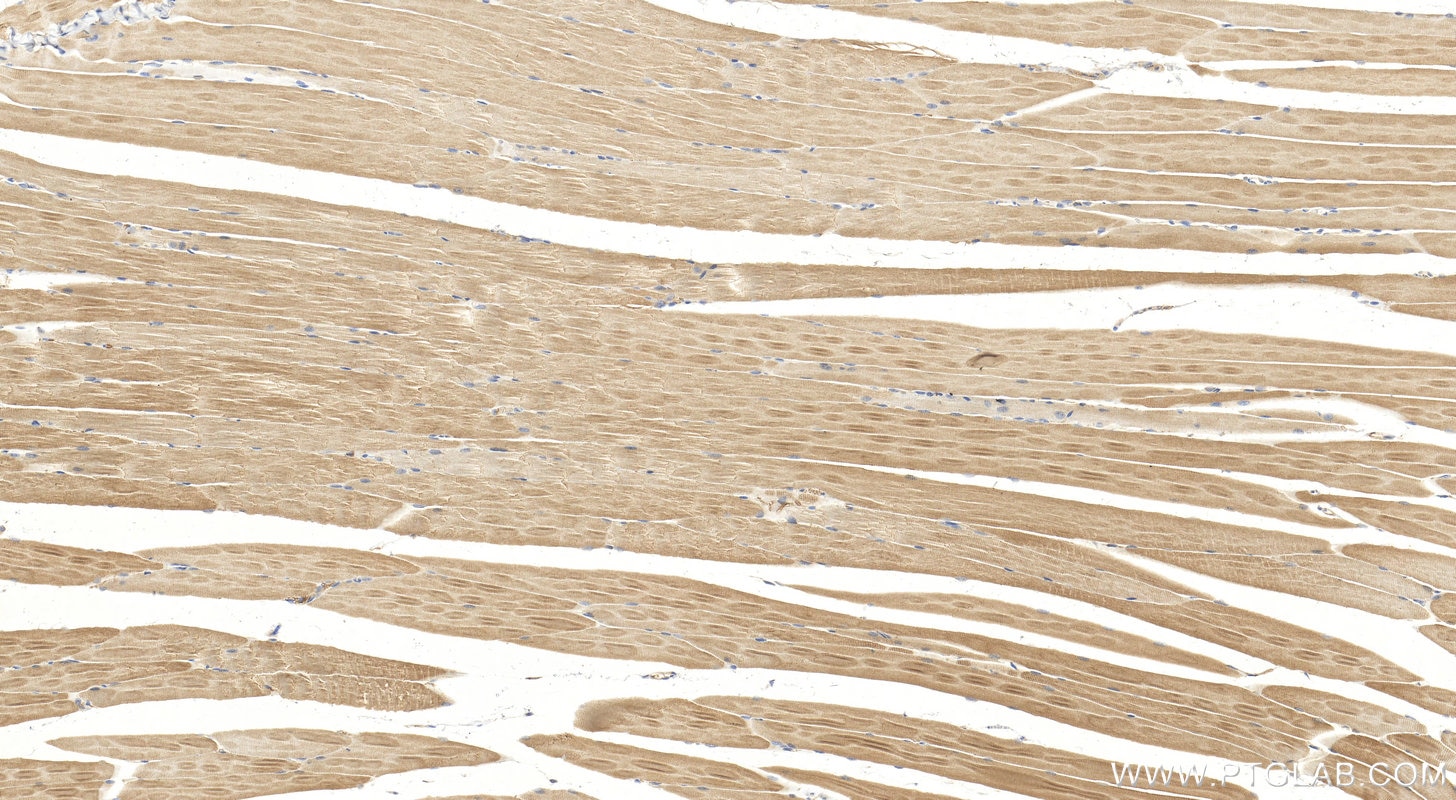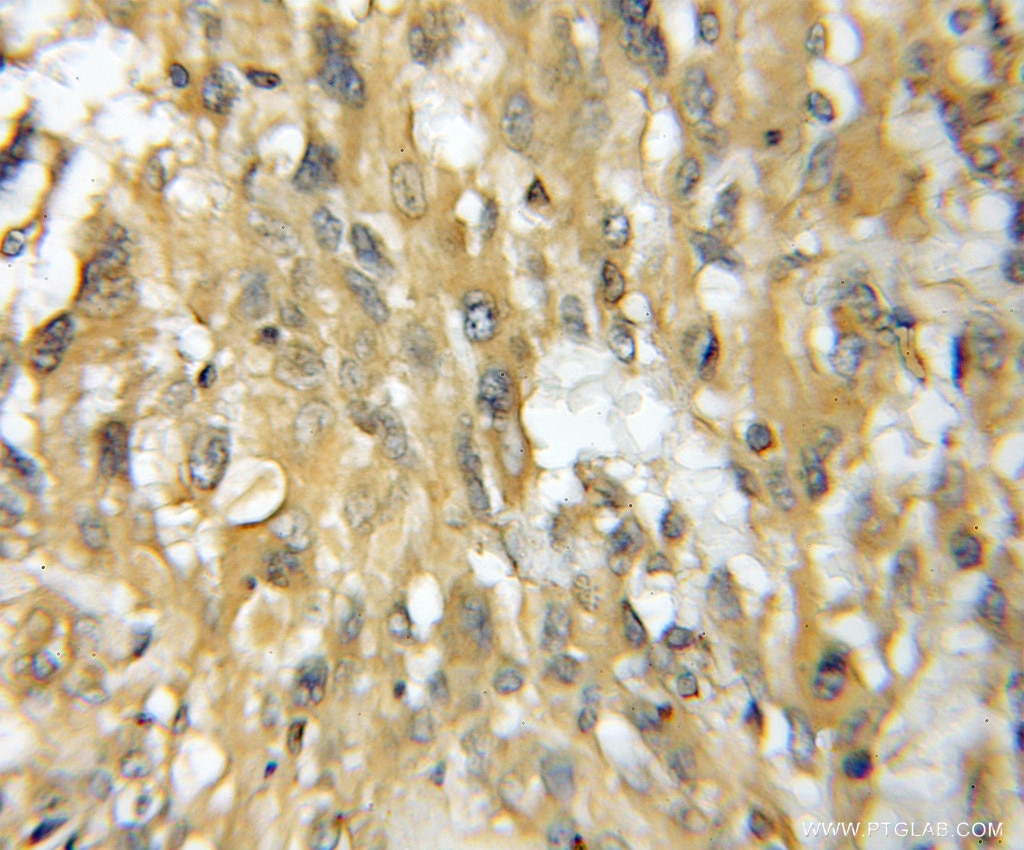Tested Applications
| Positive WB detected in | mouse skeletal muscle tissue, HeLa cells, human brain tissue |
| Positive IP detected in | mouse skeletal muscle tissue |
| Positive IHC detected in | mouse skeletal muscle tissue, human gliomas tissue Note: suggested antigen retrieval with TE buffer pH 9.0; (*) Alternatively, antigen retrieval may be performed with citrate buffer pH 6.0 |
Recommended dilution
| Application | Dilution |
|---|---|
| Western Blot (WB) | WB : 1:500-1:1000 |
| Immunoprecipitation (IP) | IP : 0.5-4.0 ug for 1.0-3.0 mg of total protein lysate |
| Immunohistochemistry (IHC) | IHC : 1:50-1:500 |
| It is recommended that this reagent should be titrated in each testing system to obtain optimal results. | |
| Sample-dependent, Check data in validation data gallery. | |
Published Applications
| WB | See 4 publications below |
| IHC | See 1 publications below |
| IF | See 3 publications below |
Product Information
11753-1-AP targets TMOD4 in WB, IHC, IF, IP, ELISA applications and shows reactivity with human, mouse, rat samples.
| Tested Reactivity | human, mouse, rat |
| Cited Reactivity | mouse, rat, zebrafish, xenopus, branchiostoma belcheri |
| Host / Isotype | Rabbit / IgG |
| Class | Polyclonal |
| Type | Antibody |
| Immunogen |
CatNo: Ag2349 Product name: Recombinant human TMOD4 protein Source: e coli.-derived, PGEX-4T Tag: GST Domain: 1-345 aa of BC017810 Sequence: MSSYQKELEKYRDIDEDEILRTLSPEELEQLDCELQEMDPENMLLPAGLRQRDQTKKSPTGPLDREALLQYLEQQALEVKERDDLVPFTGEKKGKPYIQPKREIPAEEQITLEPELEEALAHATDAEMCDIAAILDMYTLMSNKQYYDALCSGEICNTEGISSVVQPDKYKPVPDEPPNPTNIEEILKRVRSNDKELEEVNLNNIQDIPIPMLSELCEAMKANTYVRSFSLVATRSGDPIANAVADMLRENRSLQSLNIESNFISSTGLMAVLKAVRENATLTELRVDNQRQWPGDAVEMEMATVLEQRPSIVRFGYHFTQQGPRARAAQAMTRNNELRRQQKKR Predict reactive species |
| Full Name | tropomodulin 4 (muscle) |
| Calculated Molecular Weight | 345 aa, 39 kDa |
| Observed Molecular Weight | 39 kDa |
| GenBank Accession Number | BC017810 |
| Gene Symbol | TMOD4 |
| Gene ID (NCBI) | 29765 |
| RRID | AB_2205433 |
| Conjugate | Unconjugated |
| Form | Liquid |
| Purification Method | Antigen affinity purification |
| UNIPROT ID | Q9NZQ9 |
| Storage Buffer | PBS with 0.02% sodium azide and 50% glycerol, pH 7.3. |
| Storage Conditions | Store at -20°C. Stable for one year after shipment. Aliquoting is unnecessary for -20oC storage. 20ul sizes contain 0.1% BSA. |
Background Information
TMOD4 is a member of tropomodulin (Tmod) family proteins which are capping proteins binding to the pointed end of actin filaments and preventing both elongation and depolymerization. Four mammalian Tmod genes have been identified to date. Tomd1 is expressed in terminally-differentiated post-mitotic cells, like heart, brain, lens, vasculature, and erythrocytes; Tmod2 expressed in neurons; Tmod3 expressed ubiquitously; Tmod4 expressed only in skeletal muscles. This antibody was raised against the full-length human TMOD4 and may cross-react with other Tmods.
Protocols
| Product Specific Protocols | |
|---|---|
| IHC protocol for TMOD4 antibody 11753-1-AP | Download protocol |
| IP protocol for TMOD4 antibody 11753-1-AP | Download protocol |
| WB protocol for TMOD4 antibody 11753-1-AP | Download protocol |
| Standard Protocols | |
|---|---|
| Click here to view our Standard Protocols |
Publications
| Species | Application | Title |
|---|---|---|
Elife Downsizing the molecular spring of the giant protein titin reveals that skeletal muscle titin determines passive stiffness and drives longitudinal hypertrophy. | ||
J Cell Sci Leiomodin 3 and Tropomodulin 4 have overlapping functions during skeletal myofibrillogenesis. | ||
Dis Model Mech Loss of tropomodulin4 in the zebrafish mutant träge causes cytoplasmic rod formation and muscle weakness reminiscent of nemaline myopathy. | ||
J Proteome Res Proteomic and Phosphoproteomic Analysis of Right Ventricular Hypertrophy in the Pulmonary Hypertension Rat Model | ||
Front Physiol Titin isoform size is not correlated with thin filament length in rat skeletal muscle. |

